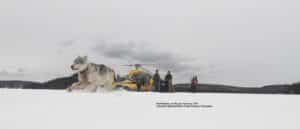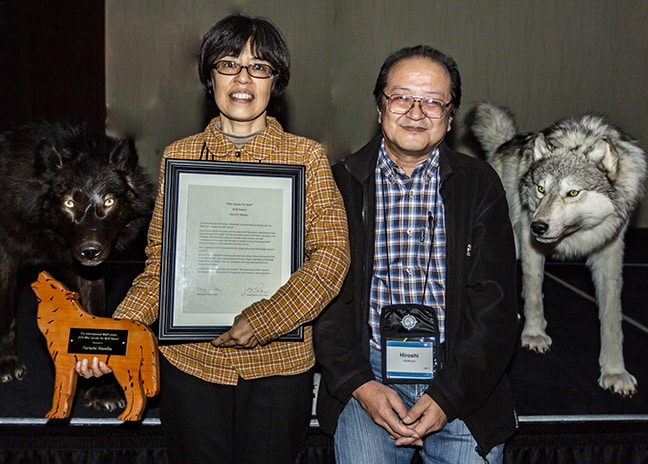Up to six wolves, in danger of starvation, could be moved this weekend
Contacts:
National Parks of Lake Superior Foundation – Carol Brady
Phone: 906-362-3152
E-mail: cbrady@nplsf.org
International Wolf Center – Chad Richardson
Phone: 763-560-7374, ext. 225
Email: chad@wolf.org
Cell: 651-214-4989
FOR IMMEDIATE RELEASE – National Parks of Lake Superior Foundation (The Foundation) announced today that, with the support of the International Wolf Center, an urgent final effort is underway to move four to six wolves to Isle Royale National Park over the next four days.
Earlier this year, two wolves from Michipicoten Island (located in northern Lake Superior) were moved to Isle Royale. Four to six wolves still remain on the island and are at risk since their only available winter prey on the island, caribou, are gone. Officials had hoped to move all of the wolves off Michipicoten earlier, but poor weather, government shutdowns and a lack of funding delayed that effort.
The Foundation and the International Wolf Center agree that this wolf relocation project needs a strong start to have a more immediate impact on the current burgeoning moose population on Isle Royale, where an estimate of more than 1,600 moose are threatening the ecosystem.
“On Michipicoten, nature’s lessons can be cruel and starvation is one of them,” said Sona Mehring, the chair of the Foundation. “For the remaining wolves on Michipicoten, that will be their fate unless we help move them to Isle Royale National Park, where their hunting skills and genetics can add value to establishing a new population of wolves on Isle Royale.”
“We’re especially proud of the fact that the International Wolf Center is helping to save the lives of a small pack of wolves on Michipicoten Island,” said the Center’s Executive Director Rob Schultz. “Since all of the caribou have been removed from Michipicoten, there’s nothing left for the wolves there to eat this winter and there is a real threat of starvation.”
It is estimated that the four-day effort, which will begin either Friday (March 22) or Saturday (March 23), will cost $100,000. The Foundation raised $30,000. The International Wolf Center raised an additional $45,000. The organizations have started a GoFundMe page to raise the final $25,000. That page can be found at bit.ly/isleroyalewolves.
“As we discussed this project, we found many people who supported seeing the forests of Isle Royale remaining healthy,” Mehring said. “We are close to realizing the goal of providing another capture opportunity to move these iconic wolves to an island that needs them in its ecosystem.”
Science has long showed that wolves play an important role in nature. This translocation shows how wolves can be used to naturally manage ungulate populations.
“Since the reintroduction of wolves in Yellowstone National Park, we’ve seen first-hand the positive impact wolves have on ecosystems,” Schultz said. “A thriving wolf population in Isle Royale’s ecosystem will make a similar impact. If left unchecked, moose would over-consume the island’s vegetation. Apex predators, like wolves, are important components of any healthy, natural ecosystems.
“This shows just one more way we put our donor’s support to hard work to advance wolf populations around the world. We’re honored to team up with National Parks of Lake Superior Foundation to make a difference together.”
-30-
National Parks of Lake Superior Foundation is a nonprofit organization dedicated to preservation of the natural resources and unique cultural heritage of Lake Superior’s five U.S. National Parks. National Parks of Lake Superior Foundation funds research, restoration, education, and resource protection projects for Apostle Islands National Lakeshore, Grand Portage National Monument, Isle Royale National Park, Keweenaw National Historical Park, and Pictured Rocks National Lakeshore. The National Parks of Lake Superior Foundation has a proven record of funding projects both large and small providing more that $1.5 million in funding across all five parks.
The International Wolf Center, founded in 1985, is known worldwide as the premier source for wolf information and education. The mission of the Center is to advance the survival of wolf populations by teaching about wolves, their relationship to wildlands and the human role in their future. The Center educates through its website, its ambassador wolves, museum exhibits, educational outreach programs, International Wolf magazine, and a beautiful interpretive center in Ely, Minnesota.



